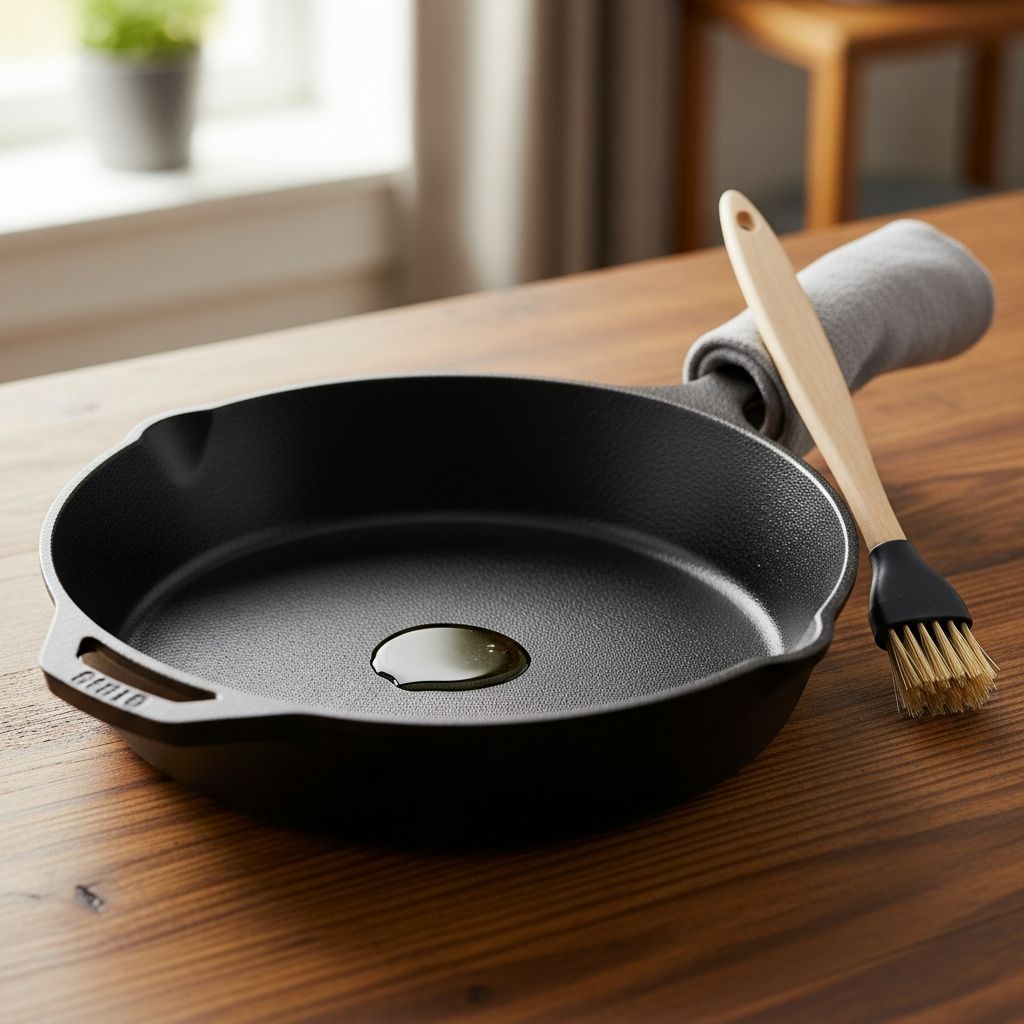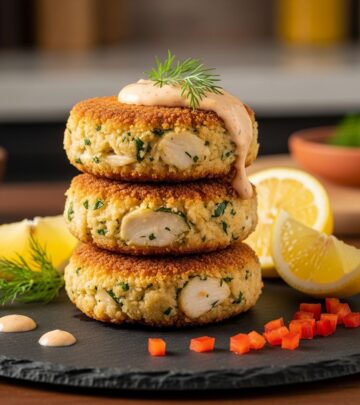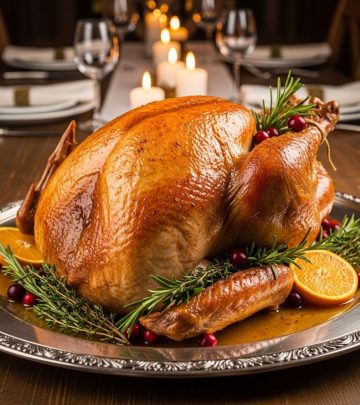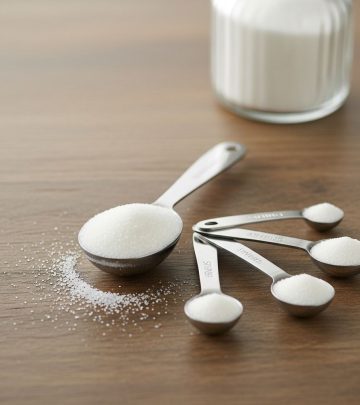How to Clean and Maintain a Cast Iron Skillet
Master the care, cleaning, and restoration of cast iron pans for long-lasting, nonstick performance in your kitchen.

Cast iron skillets are beloved in kitchens worldwide for their unbeatable heat retention, natural nonstick seasoning, and rugged longevity. With attention to daily care and periodic maintenance, your cast iron skillet can serve your kitchen for generations—and only get better with age.
Why Bother Caring for Cast Iron?
Unlike modern nonstick pans, cast iron cookware relies on a natural seasoning layer (a polymerized coating of oil baked on during use) for its nonstick abilities and protection from rust. Proper cleaning and maintenance reinforce this seasoning and extend the pan’s lifespan, protecting your culinary investment.
Table of Contents
- Everyday Cleaning Routine
- Dealing With Stubborn Residue
- Proper Drying and Oiling
- Restoring a Rusty Cast Iron Skillet
- How and When to Season Cast Iron
- Storage Tips to Prevent Damage
- Common Cast Iron Myths and Facts
- Frequently Asked Questions
Everyday Cleaning Routine
Adopting a consistent process for cleaning your skillet after each use is the foundation of cast iron care. The process is both simple and quick:
- Let the skillet cool slightly. Avoid plunging a hot skillet into cold water to prevent thermal shock and cracking.
- Rinse with hot water. Use warm or hot water to loosen food bits and residue.
- Wipe away debris. Use a non-abrasive brush, scraper, or sponge for gentle cleaning. For pans with stuck-on bits, a dedicated pan scraper can be invaluable.
- Avoid soaking. Prolonged water exposure may cause rusting. Clean promptly.
Traditional wisdom held that soap would strip seasoning, but modern advice accepts occasional light soap use—especially when tackling particularly greasy or sticky messes. The seasoning bonds tightly to the iron and, if matured, won’t be harmed by a small amount of gentle dish soap.
Dealing With Stubborn Residue
Cooking at high heat or searing proteins can sometimes leave behind resilient, crusted-on bits. Here’s how to tackle them without harming your skillet:
- Use a pan scraper or stiff brush. Scrape or brush residue after letting water loosen the bits.
- Simmer water for hard residue. Pour a little water into the pan, bring it to a simmer for 3–5 minutes, then use your scraper while the pan is still warm (not hot).
- Try a salt scrub. For especially stuck-on bits, pour coarse kosher salt in the pan and scrub with a damp cloth or brush. Rinse and dry thoroughly.
- Mild dish soap is OK. Don’t hesitate to use a little soap if needed and your seasoning is strong.
Proper Drying and Oiling
Once your cast iron skillet is clean, fully drying and re-oiling are critical steps to deter rust and preserve that precious seasoning layer:
- Dry immediately. Either towel-dry with a lint-free cloth or place the skillet on low heat on your stovetop for a few minutes to evaporate all moisture.
- Apply a thin oil coat. Once dry, place a small amount of neutral oil (such as vegetable, grapeseed, canola, or flaxseed oil) in the pan. Rub it into every surface, including the interior, sides, exterior, and handle, wiping away all excess until the surface appears dry to the eye and touch.
Storing the pan without oiling can accelerate rust, while using too much oil during this step can cause sticky or uneven patches. Always wipe away extra oil so only a microscopic coating remains.
Restoring a Rusty Cast Iron Skillet
Even a vintage, heavily rusted skillet can be revived with a little work. Rust often appears when cast iron is stored wet, neglected, or exposed to humidity. Here’s how to restore your pan:
- Scour the rust. Scrub the rusty areas vigorously with steel wool or a stiff brush. Don’t be afraid to use a bit of soapy water, as you’ll be seasoning the pan again after stripping away rust.
- Rinse and dry completely. Remove all debris and pat or air-dry thoroughly.
- Apply oil generously. Rub a thin, even layer of oil everywhere on the pan’s surfaces.
- Bake in the oven. Place the skillet upside down on the top oven rack at 450–500°F (232–260°C) for one hour. Lay foil or a rimmed baking sheet on the lower rack to catch any oil drips. Let cool inside the oven. Repeat if necessary to build up the seasoning and achieve a deep black finish.
This process not only removes rust but fully re-seasons the pan, returning its signature slickness and rich, black color.
How and When to Season Cast Iron
Seasoning is the process of bonding a layer of oil to the surface of your cast iron through heat, creating a tough, nonstick, and rust-resistant finish. Most new skillets come pre-seasoned, but it’s helpful to know how (and when) to do it yourself:
- After restoration (removal of rust or heavy cleaning)
- If you notice dull spots, sticky patches, or food sticking more than usual
- Annually or semi-annually as general maintenance for heavily used pans
Steps for Seasoning at Home
- Preheat oven to 450–500°F (232–260°C). Place foil or a baking sheet on the lower rack.
- Clean and dry skillet completely.
- Rub a thin, even layer of oil (preferably flaxseed, vegetable, or canola) over all surfaces, inside and out.
- Wipe away any excess oil until the pan appears dry.
- Bake upside down for 1 hour. Turn off the oven, let the skillet cool inside.
- Repeat for best results. Building up several layers deepens the nonstick finish and gives a classic black patina.
Storage Tips to Prevent Damage
The way you store your pan also plays a role in longevity and performance:
- Store in a dry place. Moist environments or damp pan surfaces can lead to rust.
- Place a paper towel between pans. If stacking, a towel or cloth protects the seasoning from scratches.
- Let pans air dry briefly before storing. But don’t let moisture linger long enough to risk rust development.
Common Cast Iron Myths and Facts
| Myth | Reality |
|---|---|
| Never use soap on cast iron. | A little mild soap is safe for mature seasoning and necessary at times to remove tough residues. |
| Iron skillets can’t be restored from rust. | With elbow grease and seasoning, even heavily rusted pans can be revived to like-new condition. |
| Wooden utensils are required. | Wood, silicone, or nylon utensils all work. Avoid metal if possible, but seasoned surfaces are impressively tough. |
| Cast iron heats evenly from the start. | It takes time to preheat, but then distributes heat exceptionally well once hot. |
| Oiling after every wash is optional. | Re-oiling after cleaning is absolutely essential to prevent rusting and maintain your seasoning. |
Frequently Asked Questions (FAQs)
Q: Can I use steel wool or a metal scrubber on cast iron?
A: Yes, especially when restoring or removing rust. For daily cleaning, use a softer brush, but for deep cleans and rust removal, steel wool is excellent. Just remember to re-season afterward.
Q: What’s the best oil for seasoning?
A: High smoke point, neutral oils such as vegetable, grapeseed, canola, or flaxseed oil are preferred. Choose one with little flavor and high heat stability.
Q: Can cast iron go in the dishwasher?
A: No. Never clean cast iron in a dishwasher; the prolonged exposure to water and detergent will strip seasoning and trigger rusting almost instantly.
Q: Does acidic food (tomato, wine) ruin cast iron?
A: Brief cooking of acidic foods is usually fine if your seasoning is strong, but prolonged simmering can compromise it. Stick to braising and deglazing with such foods only once your skillet is solidly seasoned.
Q: Why does my towel get black when I wipe my skillet?
A: Dark residue is just a small amount of seasoning and is harmless. It means the seasoning is still bonding and normal during the first several uses.
Q: How do I fix a sticky skillet after seasoning?
A: Sticky surfaces mean too much oil was used. Heat the pan in the oven at 450°F to polymerize the oil fully, or scrub with hot water, dry, and apply a thinner oil coat for your next seasoning round.
Pro Tips for Cast Iron Mastery
- Preheat your skillet thoroughly before adding food for an even cook and better release.
- Keep your pan seasoned by frequent cooking and light oiling—bacon and frying chicken are flavor-packed ways to enhance seasoning.
- Don’t sweat minor surface discoloration or minuscule rust spots. Just scrub, dry, oil, and continue.
- Never leave food in cast iron after cooking; prolonged moist contact promotes rust and lingering odors.
- Hand dry immediately after washing—and reapply a thin coat of oil every time.
Cast Iron Skillet Care: Lifelong Cooking
Caring for your cast iron skillet takes just a few minutes with each use, but the payoff is a reliably nonstick, virtually indestructible pan that cooks better over time. By following these simple steps for cleaning, drying, oiling, and occasional restoration, you’ll enjoy a skillet that only gets more seasoned and more treasured with age. Happy cooking!












